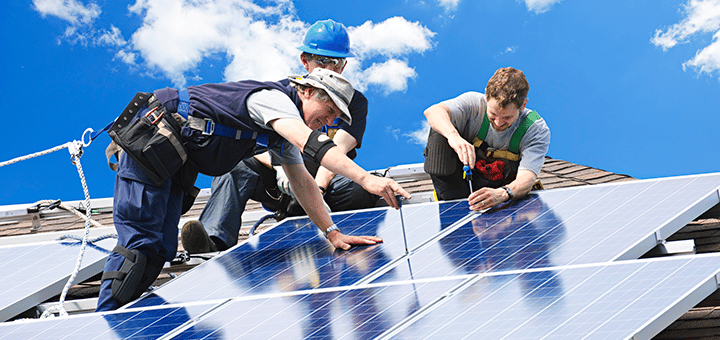There is so much more to a solar energy system than simply the panels. It has multiple components involved in order to create the entire system, with many brands to choose from. All of these brands can offer unique benefits and often improve a system’s ability in order to perform better than expected. So, for you to understand the investment you are looking to make for your house, we’ve created this article.

Each project or home is different and the equipment used can vary from house to house due to a main factor like the roof. In general, here’s what you can expect from a solar system:
Paneles solares
Básicamente, los paneles solares están compuestos por células fotovoltaicas (conocidas como PV por sus siglas en inglés) montadas en un marco para su instalación. Como algunos de ustedes saben, los paneles solares utilizan la luz solar como fuente de energía para generar electricidad de corriente continua. Entonces, una colección de módulos fotovoltaicos se llama panel fotovoltaico y un sistema de paneles fotovoltaicos se llama sistema solar.
Inversor
El inversor es una parte fundamental de cualquier sistema de energía solar. Básicamente, guía la energía y de esa manera sabe por dónde fluir para convertirla en energía de corriente alterna, para que pueda ser utilizada en su hogar.
El principal objetivo del inversor es transformar la electricidad que producen los paneles solares en electricidad de 240V, qué es lo que alimenta todo en tu hogar. Como puede ver, este dispositivo es una pieza de tecnología de trabajo duro que funciona durante toda la vida útil de su sistema solar.
Caja de fusibles
The electrical panel distributes AC electricity to your entire home. You probably know it by its common name, “Fuse Box.” It is like the switchboard for all electricity in your house. Basically, it receives the incoming power from the utility company and distributes it to each of the circuits that supply the various lights, outlets, appliances, and other electric devices in the house.
Medidor de servicios públicos
The utility meter measures how much energy comes from and goes to the grid. So, when the sun is shining, you may get all of your energy from solar, but there are some factors like weather, winter, and nighttime that won’t allow the solar panels to generate as much electricity as they normally do during the day. So, you will still have to buy some energy the old-fashioned way (leveraging energy from the grid), unless you have a solar battery. Which allows you to save energy and to be used later.
Fuente: Gem energy
